Making Ice Cream with Ice: A Fun Science Guide
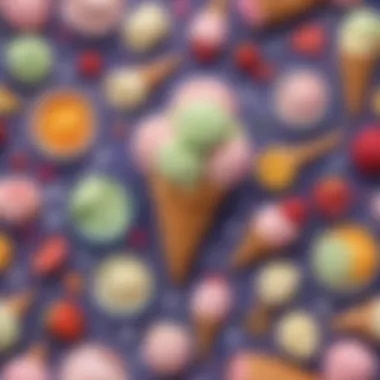
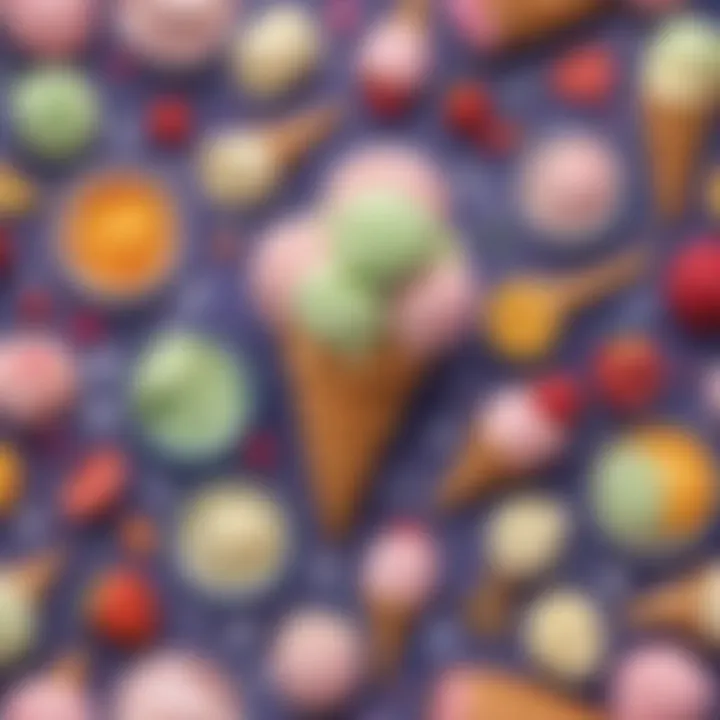
Intro
Ice cream is not just a sweet treat; it’s a delightful mix of science and creativity. For those eager, curious minds, ranging from six to twelve years old, making ice cream at home can be both educational and fun. In this guide, we’ll explore how to make ice cream using ice as an essential ingredient. Kids, accompanied by parents or caregivers, will learn about the freezing process, measurement, and even a bit of chemistry, all while indulging in a yummy dessert.
Science Fun Facts
Let’s dive into some fascinating science tidbits that can pique the interest of young scientists:
- Cooling Down: The temperature at which water freezes is 0 degrees Celsius or 32 degrees Fahrenheit. This is crucial when we think about how we freeze our ice cream mix!
- Salt and Ice: Adding salt to ice lowers the freezing point, which helps in creating a colder environment for ice cream to form. It’s like giving the ice a superhero power!
- What’s in Ice Cream?: Ice cream is made of just a handful of ingredients—cream, sugar, and flavoring. What makes it special is the air that gets trapped during mixing, creating a fluffy texture.
- All About the Shake: Did you know that shaking a mixture, whether using a jar or a bag, helps introduce air and start the freezing process? It’s all about getting the right mix!
Fun Fact: Did you know that the world’s largest ice cream cake weighed over 2,900 pounds? Now that's a sweet record!
Discover the Wonders of Science
Making ice cream is an engaging way to understand various scientific concepts while developing cooking skills.
Exploring Various Scientific Concepts
Kids can learn about:
- States of Matter: How do solids, liquids, and gases interact when making ice cream?
- Temperature Effects: Notice how the ice melts and the mixture freezes. What happens when temperatures change?
Educational Videos and Animations
Explore resources like Britannica where you can find educational videos showing the science of freezing and ice cream making.
Interactive Learning Tools
Utilize online simulations to visualize how heat transfer works during the freezing process. Websites like Reddit often have active discussions around simple science experiments for kids.
Real-Life Applications of Science
Beyond the kitchen, the principles of freezing and temperature changes apply to many industries, including food preservation and medicine.
Science Experiment Showcase
Fun and Engaging Experiments
Here’s what you need to craft some ice cream:
Materials List
- Ice
- Rock salt
- Small zip-lock bags
- Large zip-lock bags
- Heavy cream
- Sugar
- Vanilla extract (or any favorite flavor)
Step-by-Step Instructions
- In the smaller zip-lock bag, mix heavy cream, sugar, and vanilla extract.
- Seal this bag securely, trying to remove as much air as possible.
- In the larger zip-lock bag, fill it halfway with ice and pour in about ½ cup of rock salt.
- Place the small bag inside the larger bag.
- Seal the larger bag and shake it vigorously for 5-10 minutes. Watch as the temperature drops, and the mixture begins to freeze!
- Carefully open the bags, and enjoy your homemade ice cream!
Safety Tips and Precautions
- Always wash hands before cooking.
- Ensure the bags are sealed tightly to prevent spills.
- Be careful with ice — it can be slippery!
Science Quiz Time
Now let's test your knowledge!
Interactive Quizzes
How well do you understand the science behind your sweet treat? Try answering these:
- What happens to ice when salt is added?
- How does shaking the bag help?
- A) It melts faster
- B) It freezes faster
- C) It stays the same
- A) It makes the ice cream fluffier
- B) It cools the mixture
- C) Both A and B
Learning Through Gamification
Quiz games are an excellent pathway for fun learning. Encouraging young ones to remember core concepts while enjoying themselves is the name of the game!
Crafting ice cream isn’t just about making a dessert; it’s a journey through the fascinating world of science, where every scoop can be an adventure!
Foreword to Ice Cream Making
Making ice cream is more than just a tasty treat; it's a delightful blend of science and creativity that captivates the imagination of kids and adults alike. At its core, crafting this beloved dessert provides not only a delicious outcome but also an opportunity to engage young minds in the fundamentals of chemistry, physics, and creativity. When we dive into the art of ice cream making, we uncover how simple ingredients transform through cooling processes and mixing techniques.
With an engaging hands-on approach, making ice cream can teach children about measurement, the states of matter, and the role of temperature. It’s a sweet journey into the world of science where every scoop holds a lesson, and every flavor tells a story. The benefits of exploring this topic are numerous: it serves as an engaging family activity, enhances fine motor skills through mixing and measuring, and fuels curiosity about the world around us.
Notably, this exploration encourages children to think critically about the materials they are using and the transformations they witness. As they stir and churn ingredients, they gain tangible experience with process and change, which lays the groundwork for deeper scientific understanding in years to come.
The Fascination with Ice Cream
Ice cream has an almost magical quality that draws people in. The creamy texture, the myriad of flavors, and the delightful chill it brings on a summer day spark joy in hearts of all ages. The first experience of tasting ice cream often leaves a lasting impression—think of the first time a child gets a cone topped with their favorite flavor, wide-eyed and blissful.
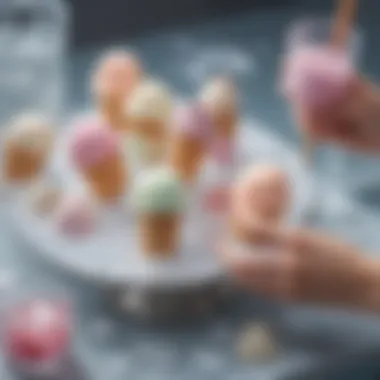
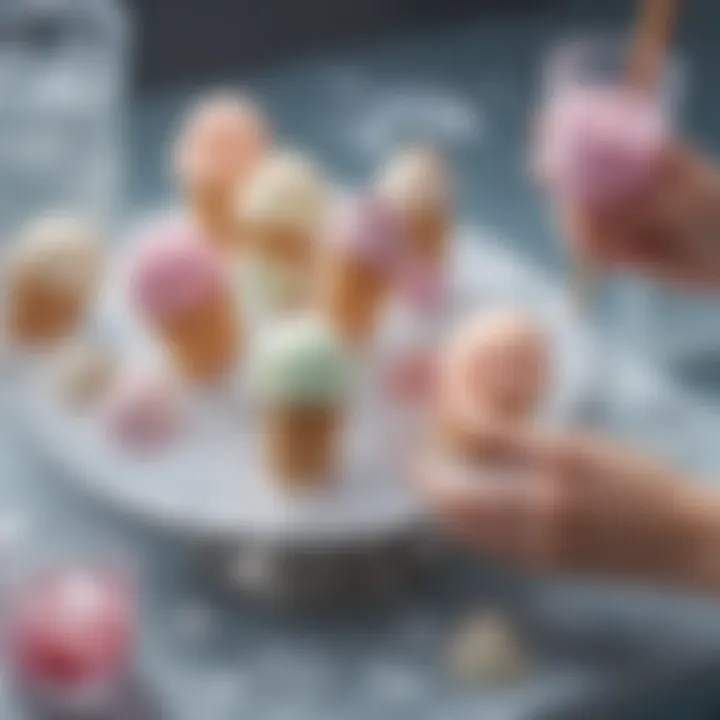
The allure of ice cream lies not only in its taste but also in its versatility. Children can easily relate to its adaptability; they can mix fruits, nuts, or even candies into their ice cream, creating a concoction that is uniquely theirs. Each creation is a personal statement—a canvas for young chefs to express their creativity.
Why Use Ice in Ice Cream?
The use of ice in ice cream making is not arbitrary, but rather a critical component of the freeze-and-thaw process. When we mix ice with salt, a chemical reaction occurs that lowers the temperature of the ice, creating an ultra-cold environment to firm up the ice cream mixture. It’s a simple yet effective demonstration of how physical properties can lead to delightful results.
Kids can learn that the salt does two things: it lowers the freezing point of ice, allowing the mixture to freeze more effectively; and it absorbs heat. This interaction helps achieve the perfect creamy texture that everyone loves. It’s like working with nature’s refrigerator!
By adding ice to the ice cream-making process, young scientists can see firsthand how temperature affects texture and flavor. Understanding this relationship fosters a deeper appreciation for how we create food, turning an everyday activity into a fun educational experience.
Understanding Ice Cream Science
In the delightful journey of making ice cream, understanding the science behind it can really spark a child's curiosity. Why does the mix freeze? What does temperature have to do with flavor? In this section, we dive into the fascinating world of ice cream science, shedding light on important components that make this frozen treat so special. By grasping these fundamental principles, young scientists can gain a deeper appreciation for not only ice cream but also the scientific experiments they conduct in their own kitchens.
Temperature plays a key role in determining both the texture and flavor of ice cream. If the mix freezes too quickly, it might end up too icy instead of creamy. Conversely, if it doesn't freeze enough, it can be too soft and won't hold its shape well. Understanding how the right balance of temperature affects the final product ensures that young chefs can whip up something truly scrumptious.
The Role of Temperature
Temperature can be thought of as the magic wand when crafting ice cream. It creates the conditions needed for those little ice crystals to form and blend seamlessly into a creamy delight. Ice cream freezes best at a temperature between -20°F and -10°F (-29°C and -23°C). If the mixture is exposed to temperatures too warm, it won’t solidify properly. On the other hand, if it gets too cold, it can freeze too firm, making it difficult to scoop.
Here's something to ponder: why do ice cream makers often use salt in their ice? Salt lowers the freezing point of ice, allowing the mixture to get cold enough to freeze. This simple addition not only enhances the freezing process but also makes it easier for children to engage in hands-on learning about physical changes!
The Importance of Ingredients
When it comes to making ice cream, it’s the ingredients that bring the magic to life. Each component plays its part in creating the desired flavor and texture. Understanding their roles not only enriches the ice cream-making process, but also empowers young scientists to experiment with different combinations.
Milk and Cream Basics
The foundation of most ice creams lies in milk and cream. Milk contains proteins and fats that contribute to the smoothness and richness of the ice cream. Cream specifically, due to its higher fat content, gives ice cream that luxurious texture that one can only dream about. When milk mixes with cream, the end result is a creamy consistency, which is highly sought after.
However, you might wonder: why not just use milk or just cream? Using both balances out the richness and creates a lighter texture. Besides, it allows room for more flavors to shine through. It’s a delightful dance of flavors and textures that gives young scientists the chance to appreciate the art of making ice cream.
Adding Flavor: Vanilla, Chocolate, and More
Now let’s talk about flavor. Adding ingredients like vanilla or cocoa powder is what transforms a simple base into a favorite treat. Vanilla is a classic choice, well-loved for its versatility. It acts as a perfect canvas, letting additional flavors blend in harmoniously.
Chocolate, on the other hand, brings a bold richness that can balance out the creaminess. The unique thing about adding flavors is the fun in experimenting. Not all flavors will behave the same way. Some might overpower the mix, while others meld beautifully. Thus, young scientists learn to be mindful of their choices and taste perceptions.
"To create unique ice cream, find a flavor that speaks to you, and don't be afraid to try combinations!"
Sweeteners: Sugar and Alternatives
Sweeteners are what give ice cream its delightful sweetness. Traditional sugar works wonders, but there are many alternatives like honey or agave syrup. Each sweetener has its characteristics, impacting texture and flavor. For example, sugar not only makes the ice cream sweet, but it also influences the freezing process. It helps keep the ice cream scoopable even when frozen.
On the flip side, natural alternatives might lend interesting flavors but can alter the texture. Thus, understanding these ingredients enables young makers to tailor their creations based on their taste preferences and dietary needs, all while becoming proficient in the art of ice cream science.
In summary, grasping the nuanced role of ingredients like milk, cream, flavors, and sweeteners opens a world of possibilities. Young scientists can explore, create, and learn through the simple act of making ice cream, fostering their love for both cooking and science.
Essential Tools for Ice Cream Making
When it comes to making ice cream, having the right tools is half the battle. This section is essential because it unpacks the equipment and ingredients necessary for a successful and enjoyable ice cream-making experience. The excitement of creating a frozen treat can quickly turn into frustration if you are missing a critical dish or utensil. Keeping that in mind, let’s explore the items you'll need to roll up your sleeves and start crafting your ice cream dream.
Gathering the Necessary Ingredients
Choosing the Right Ice
One of the first considerations in making ice cream is selecting the right type of ice. Not all ice is created equal, and it can greatly affect the churning process. Ideally, you want to use crushed ice, as it promotes better heat transfer compared to larger ice cubes. Crushed ice compacts more closely together, allowing the cold to surround the ice cream mixture evenly. This is super important for achieving that dream texture!
A handy tip is to make your own crushed ice by placing ice cubes inside a ziplock bag and using a rolling pin or your hands to break them down. This method ensures you have just the amount you need without running to the store.
Key Features:
- Compact and Efficient: Crushed ice helps maintain a low temperature more effectively.
- DIY Potential: You can easily make your own crushed ice at home.
However, beware that too much moisture can be a disadvantage as it might lead to slushiness if left for too long. So, timing is crucial when making your ice cream!
Selecting Mixing Bowls and Containers
Mixing bowls and containers deserve a bit of thought as well. Choose bowls that are made from stainless steel or glass, as these materials do a better job at retaining cold temperatures than plastic. They also ensure that your mixtures remain uncontaminated.
Key Characteristics:
- Temperature Retention: Metal can keep things colder, which is a big win for ice cream making.
- Cleanliness: Smooth surfaces help in easy cleaning and ensure no lingering flavors from previous uses.
Though glass bowls are often quite nice, they can be heavy and fragile. If little hands are doing the mixing, consider using stainless steel for durability.
Mixing Tools
After you've gathered the essential ingredients, it's time to roll up your sleeves and get mixing!
Measuring Cups and Spoons
Measuring tools are non-negotiable in the realm of cooking. When it comes to ice cream, getting measurements just right is crucial since it helps to maintain flavor balances. Using measuring cups ensures that you add exactly the right amount of cream or sugar. Eyeballing it may work sometimes, but it’s a risky game!
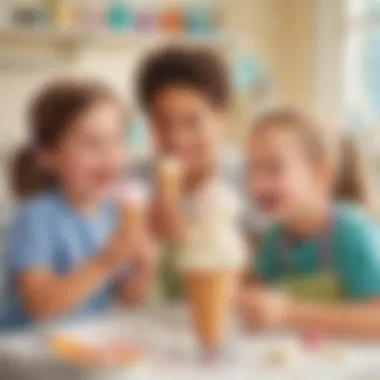
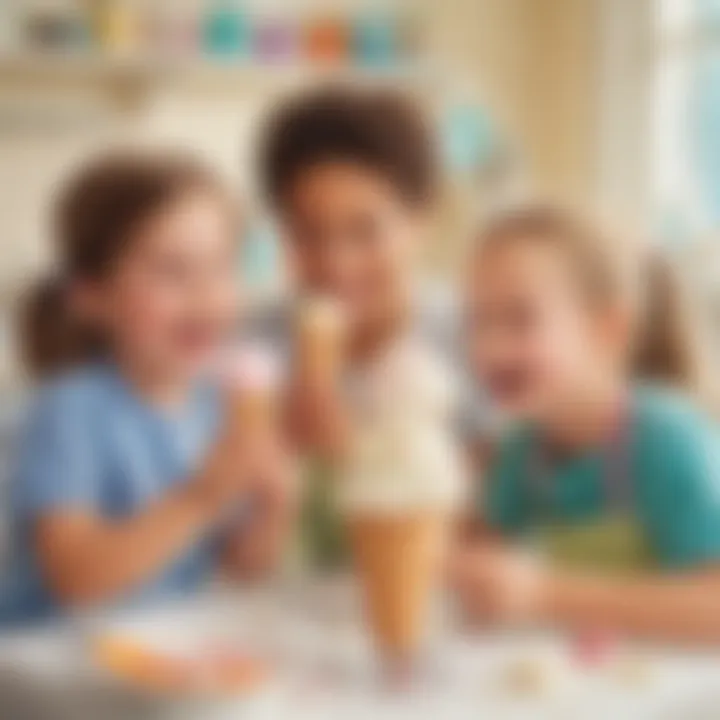
Benefits:
- Precision Leads to Better Ice Cream: Accurate measurements ensure flavor consistency.
- Simplicity: They're often inexpensive and easy to use for anyone.
While many kids might enjoy using any old cup, over time, accuracy can affect the outcome. So, it's best to invest in a standard set for the kitchen.
Whisks and Spatulas
Whisks and spatulas serve different but vital roles in the mixing process. The whisk is perfect for blending the base mixture well, incorporating air which can lead to a fluffier ice cream. Meanwhile, spatulas are excellent for scraping every last bit of ice cream out of the bowls, leaving little waste behind.
Unique Features:
- Whisk: Ideal for aeration; perfect for mixing your ingredients thoroughly.
- Spatula: Great for precision; helps in getting all the mixture into the container without any leftovers sticking.
Although both tools might seem simple, their contributions are invaluable in not just mixing, but also in ensuring your final product is delicious and well-prepared.
"Every great ice cream begins with the right tools and the right ingredients. Don’t underestimate the power of good planning!"
In summary, having the essential tools in place sets the stage for a successful ice cream-making experience. By focusing on each component and understanding its contributions, you're one step closer to serving up some delicious homemade ice cream!
Step-by-Step Guide to Making Ice Cream with Ice
Creating ice cream using ice as a key ingredient isn’t just about tossing a few items together; it’s a fascinating journey that marries culinary art with scientific principles. This section dives into the essential steps, empowering young scientists to understand each phase of the process. The combination of making and learning transforms a simple treat into an exploratory project that enhances creativity and resilience in problem-solving. Each step builds on the last, making it vital to pay close attention to details and methods.
Preparing the Base Mixture
Combining Ingredients
Combining ingredients is the first major step toward crafting a delightful frozen treat. Here, one learns how flavors blend and textures change. The magic happens during this phase, where each component contributes to the final taste. When mixing milk, cream, sugar, and flavors, achieving a smooth consistency is crucial. The base should feel like a creamy blend rather than a watery mess.
A key characteristic of combining ingredients is finding the right balance. Too much sugar can overshadow other flavors, while not enough can make it bland. Young scientists can experiment by adjusting the sugar levels, exploring how sweetness influences overall taste. Discovering each ingredient’s role adds depth to understanding flavors.
However, the unique feature of this step lies in the ability to recognize and appreciate the significance of measurements. Using proper measuring tools not only ensures consistency but also teaches the importance of precision—an invaluable lesson in any form of science.
Stirring Techniques
Once the ingredients are combined, stirring comes into play. This step isn’t just about blending; it’s also about introducing air. Aeration is essential for a light texture in the final product. Using varied stirring techniques, like circular motions or gentle folding, each technique adds to the fabric of the mixture, helping the flavors meld together beautifully.
Stirring can also serve as the perfect practice in patience. The key characteristic of this technique is that it's simple yet critical. It offers a hands-on activity where young learners can observe how agitation impacts texture. An important note is to avoid over-stirring, which can turn a creamy mix into a grainy disaster. Understanding this contrast helps kids appreciate the delicate balance needed in cooking.
Creating the Icy Environment
The Role of Ice and Salt
At this stage, ice and salt form an essential duo. Ice is the cold force that brings the mixture to a hard freeze. Meanwhile, salt plays the role of a temperature moderator, lowering the freezing point, thus allowing the cream to chill faster. The interplay between ice and salt demonstrates a remarkable scientific reaction; this is where theory meets practice.
The key characteristic of using ice and salt is that it’s an excellent way to teach thermodynamics in a tangible manner. As young chefs observe the mixture's transformation, they witness first-hand the scientific principles at work, helping cement these concepts in their minds. Yet, one must consider the proportions carefully; using even a bit too much salt can overpower the sweet flavors of the ice cream.
How to Package Your Mixture
Packaging the mixture for freezing is often overlooked but is crucial. The right container ensures the ice cream mixture retains its coolness while preventing freezer burn. Young minds can learn about different materials and their thermal properties through this process, picking suitable containers that aid freezing.
The unique feature of proper packaging is its impact on texture. Using an airtight container is key to preventing icy crystals from forming, thus maintaining a smooth texture. This aspect carries great weight for young scientists as they see how small details can make a big difference in their ice cream’s final outcome.
Churning the Ice Cream
Manual vs. Mechanical Churning
Churning is where all the elements finally come together. By incorporating air while mixing the ingredients, it creates the perfect creamy texture. Children can choose between manual and mechanical churning methods. While manual churning connects them with hands-on effort, mechanical churners streamline the process, allowing for efficient incorporation of air without much fatigue.
The choosing of a method can lead to discussions about energy, effort, and outcomes, allowing kids to weigh their options. It’s a worthwhile exploration of patience and commitment versus quick results. Each method has its unique merits, making it important for young scientists to try both and reflect on their experiences.
Monitoring Texture Consistency
Monitoring the texture is a final, critical piece of the ice cream-making puzzle. As the mixture churns, kids learn to recognize what the desired outcome feels like. They should be encouraged to feel for that velvety smoothness, understanding when the ice cream has reached its ideal consistency.
The importance of texture consistency cannot be understated. It teaches young chefs about the correlation between preparation time, temperature, and final product. Rather than just waiting for a timer, they will learn to engage their senses actively, marking a giant leap in their scientific learning journey.
"The real magic of ice cream making isn’t just in the taste, but in the science behind it."
Through this guide, young learners are not just making ice cream; they are building knowledge and skills that will serve them well beyond the kitchen.
Exploring Different Flavors and Additions
When it comes to crafting ice cream, it's not just about the basic vanilla or chocolate. In this section, we'll dive into an exciting world of flavors and additions that transform a simple treat into something truly extraordinary. Exploring different flavors and additions allows young scientists to foster creativity, understand vast ingredient interactions, and broaden their taste horizons.
Creating Unique Flavor Combinations
Fruits, Nuts, and Spices
Fruits, nuts, and spices play a significant role in making ice cream not just delicious, but also diverse. Using fresh fruits like strawberries or mangoes introduces a burst of natural sweetness and vibrant colors, making each scoop a visual and flavorful delight. Nuts add an enjoyable crunch, texture, and a healthy dose of protein, while spices like cinnamon can introduce a warming or exotic element to the mix. This blend of flavors and textures can transform a basic ice cream into a gourmet experience.
Here’s where it gets interesting—while some fruits freeze well, others can turn icy and unpleasant. For instance, bananas can puree smoothly when frozen, which is great for a creamy banana ice cream, whereas berries make for a refreshing and tangy addition. Nuts, such as walnuts or almonds, not only provide nutrition but enhance the flavor profile of creamy bases. However, it is important to remember that too many mix-ins can interfere with the freezing process, leading to a less-than-ideal consistency.
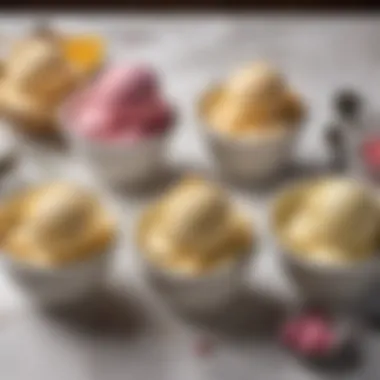
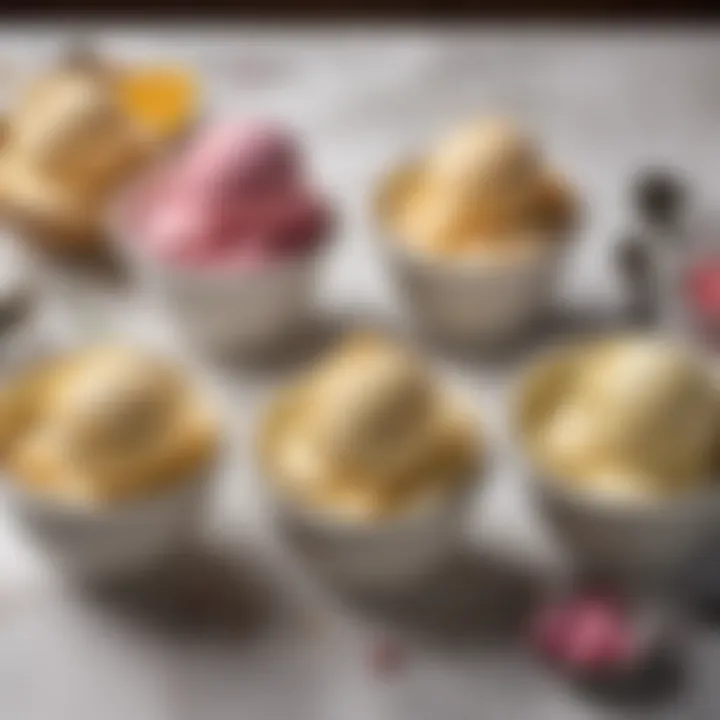
Harnessing Local Ingredients
Harnessing local ingredients means using what’s available right in your backyard or nearby farms. This approach can result in unique flavors that reflect local culture and seasonal bounty. Think of how delightful it is to make ice cream with fresh blueberries picked during the summer! Local peaches can add a sweet aroma, while locally sourced honey can provide an interesting twist compared to traditional sugar.
Additionally, local ingredients add a personal touch to the ice cream-making experience. Young scientists can learn about the origin of their food, adding an educational element to the process. On the downside, local ingredients may vary in availability throughout the year. It's important to plan ahead and maybe even discover new recipes for different seasons.
Mix-Ins and Swirls
Now we get to the fun part—mix-ins and swirls! These not only enhance the flavor but also provide a visual treat. By adding these delicious components, ice cream can be customized endlessly, catering to individual preferences and making the making process all the more engaging.
Chocolate Chips and Sprinkles
When you think of ice cream, chocolate chips and sprinkles probably come to mind. They are simple yet effective additions that can instantly amp up the fun factor. Chocolate chips offer a rich, melty contrast to the creaminess, while sprinkles bring colorful joy to each scoop. These pair perfectly with classic flavors like vanilla or chocolate. Not to mention, they are keen crowd-pleasers, especially with younger eaters.
However, adding too many chocolate chips can make the ice cream overly dense or impact the freezing process. Balance is key! Using these delightful ingredients sparingly while making sure they are well-distributed can yield the best results.
Fruit Purees and Sauces
Fruit purees and sauces can elevate the ice cream experience, adding a punch of flavor and a splash of color. Imagine a luscious raspberry swirl or a rich caramel sauce intertwined in creamy vanilla. These elements are not just fun to make, but they also allow for a variety of flavor profiles—that can cater to a broad audience.
It’s essential to consider the thickness of the puree. Thicker perues made from cooked fruits create delightful globules that are fun to bite into, whereas thinner sauces might blend more evenly for a subtle hint. Young scientists can experiment with both methods, learning how different consistencies interact with the ice cream base.
In summary, the exploration of different flavors and additions invites creativity and experimentation within the ice cream making process. Each choice can dramatically affect not just taste, but texture and visual appeal. So, unleash the inner scientist and taste the world—one scoop at a time!
Troubleshooting Common Ice Cream Issues
When kids dive into the joy of ice cream making, they often face certain hiccups along the way. Understanding and troubleshoot the common issues can make the journey smoother and the outcomes more satisfying. There’s nothing like the joy of a well-crafted ice cream, and by learning how to fix these problems, young scientists can enhance their skills and develop a deeper appreciation for the art of ice cream making.
Ice Cream Too Soft
Making ice cream is often a balancing act, and one of the most common problems encountered is when the final product turns out to be too soft. This can be disappointing, especially after all the effort that goes into mixing and chilling. Let’s explore two main reasons why this might happen.
Insufficient Churning
One key cause of soft ice cream is insufficient churning. Churning involves mixing the ingredients while incorporating air, which helps create that smooth and creamy texture we all love. If the mixture isn’t churned long enough, it simply won’t whip enough air into it. Without this essential step, the ice cream lacks stability and ends up being a runny mess.
This method highlights a critical point in ice cream science. It’s not just about freezing; it’s about texture. The unique feature of churning is that it introduces air, which is crucial. So, if kids learn the art of churning correctly, they can significantly improve the overall quality of their ice cream.
Temperature Troubles
Another culprit behind soft ice cream is temperature troubles. Ice cream needs to be frozen at a consistently low temperature to solidify properly. If the ice isn’t cold enough or the mixture is added to warm ingredients, it can lead to a mushy end product.
This aspect is particularly crucial for young chefs to grasp. Knowing the right temperatures can save their ice cream from disaster. They’ll understand that when working with ice, it plays a pivotal role in achieving optimal freezing conditions. This insight can guide them in adjusting their methods, ensuring the mixture gets that satisfying chill.
Ice Cream Too Hard
Conversely, ice cream can sometimes turn too hard, making it almost impossible to scoop. Identifying the reasons behind this issue can help kids avoid future mishaps and produce a texture that’s just right.
Excessive Freezing Times
Excessive freezing times often lead to ice cream being too hard. If the mixture sits in the freezer for too long, it can turn into a brick. This is a common issue, especially when excited young scientists leave their creations to sit unattended.
Understanding how long to freeze the ice cream is all about finding that sweet spot. The unique feature of managing freezing times lies in achieving that perfect blend of firmness and scoopability. If kids can learn to monitor their freezing periods closely, they can create a delightful treat that doesn’t require a chainsaw to serve!
Ingredient Imbalances
Finally, ingredient imbalances can contribute to overly hard ice cream as well. For example, using too much milk or not enough sugar can affect the freezing point. This imbalance results in an ice cream that isn’t as smooth or creamy as it should be.
Learning about this aspect opens the door to culinary experimentation. It encourages changes in recipes to balance flavors and textures. A careful approach to measuring ingredients teaches kids valuable kitchen skills while tweaking their creations for better outcomes.
"Great ice cream is a blend of science and art!"
By understanding these common issues, young scientists can troubleshoot and refine their ice cream-making techniques, paving the way for delicious and enjoyable experiences. Making ice cream isn't just fun, but also a real adventure in learning!
The End and Exploration Ideas
As we wrap up our delightful expedition into the world of ice cream-making, it’s essential to reflect on what we have learned and the new doors we can open for future experiments. The journey from mixing ingredients to discovering the science behind freezing methods not only brings sweetness but also knowledge. By encouraging budding scientists to engage with this process, we’re not just making a treat; we’re fostering a spirit of inquiry that can extend far beyond the kitchen.
Reflecting on the Ice Cream Journey
Once the ice cream is ready, it’s a good moment to sit back and think about all the steps involved. Each phase, from creating the base mixture to the final churning, is like a mini science project. Kids can discuss what they noticed during each step. Did the ice melt faster with salt? How did the texture change when they churned it longer? Reflecting on these questions helps deepen understanding and lets them see the connection between what they did and the tasty result.
"Cooking is a form of science, and every scoop has a lesson!"
Future Experiments
Exploration doesn’t have to end here. There’s a whole world of potential when it comes to crafting ice cream, especially when kids think creatively about ingredients and methods. Here are two avenues for future experiments:
Experimenting with Vegan Alternatives
Vegan alternatives to traditional ice cream can be a fun area to explore. This approach involves using plant-based milks like almond, coconut, or soy instead of cow's milk. The key characteristic of this method is its ability to cater to different dietary needs while still creating a creamy, delightful dessert.
What stands out about experimenting with vegan alternatives is the chance to use unique flavors and textures. For instance, coconut milk lends a tropical essence, while almond milk can provide a nutty twist. The advantages here include accommodating lactose sensitivity and introducing children to new ingredients, but it might take a bit of practice to get the right balance.
Exploring Different Freezing Techniques
Shifting focus to freezing techniques can add another layer to the ice cream-making experience. Experimenting with various approaches, such as using a traditional ice cream maker versus manual methods like shaking in a bag or using dry ice, highlights the key principle of how temperature affects texture and taste.
A unique feature of different freezing techniques is the variations in ice cream consistency. Some methods might yield a smoother texture, while others produce a more rustic feel. Exploring this helps in understanding how different methods affect the final product, making it a valuable learning experience. While these methods can take time and some trial and error, the outcomes can be both delicious and educational.







